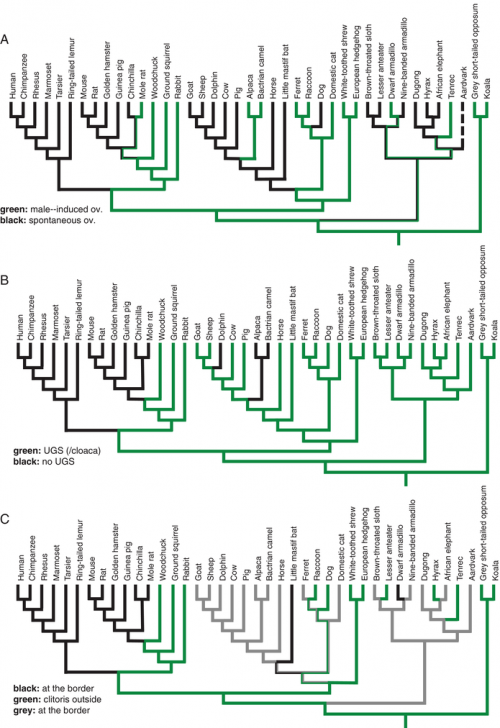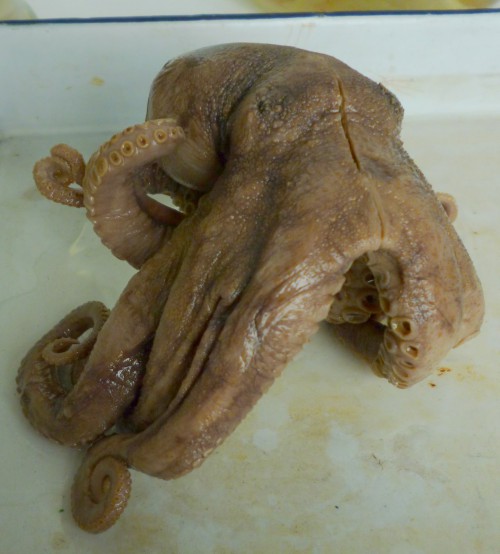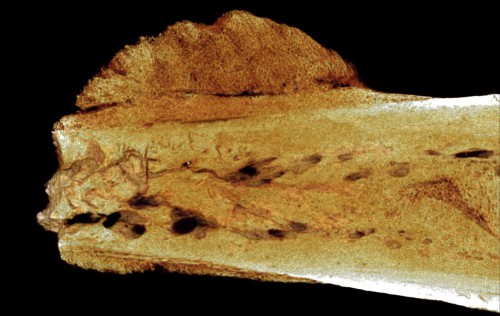As Caine mentions, wealthy Libertarian/Republican scumbag Peter Thiel sees great promise in the idea of parabiosis as a way to treat aging, which is just a little too on-the-nose for an overvalued parasite.
It actually works: some markers for aging are reduced in their effects with infusions of blood from younger donors, and it’s actually a promising technique, but not necessarily as a therapeutic treatment, as Thiel seems to think.
I’m not convinced yet we’ve found a single panacea that works. It’s possible there exist single-point things that could work. I’m looking into parabiosis stuff, which I think is really interesting. This is where they did the young blood into older mice and they found that had a massive rejuvenating effect. And so that’s … that is one that … again, it’s one of these very odd things where people had done these studies in the 1950s and then it got dropped altogether. I think there are a lot of these things that have been strangely underexplored.
The reason it was dropped, I think, is that no one saw a way to carry it forward into useful information. You have to understand that those old studies weren’t about just occasionally giving an old mouse a transfusion of blood from a young mouse — they actually stitched the two mice together in a way that allowed blood exchange between them for long periods of time and got a prolonged exchange of fluids, proteins, and cells. This is not practical as a human therapy, although it is very Mad Max.
But it worked! The old mouse in these experiments experienced multiple benefits.
The old parabiont benefits from not just young blood, but also the young organs: heart, lungs, liver, kidneys, thymus, etc; and removal/neutralization by the young parabiont of negative metabolites, chemokines, etc. These together with improved blood oxygenation, normalized glucose/insulin and cholesterol profile are all likely to contribute to the rejuvenated tissue stem cells.
OK, sign me up! Any of you young bucks like to be surgically attached to me for a while, to give me a little pick-me-up? What if I were Peter Thiel and had some buckets of money to give you for this donation?
There might be some concerns. You ought to be asking, if old blood is so deficient that it could be improved by an infusion of my young blood, and if this actually transfers some effective anti-aging components, what happens to the young mouse? Remember, this is a continuous two-way exchange.
The young parabiont has to maintain an additional aged body with poorly functioning organs, inflammation, ongoing pathologies and perturbed immune responses, which could all contribute to the observed slight decline of the young stem cell responses.
Whoops. There might be a few ethical concerns here. Also, ick.
Also, these old experiments had the problem of sorting out exactly what was causing the anti-aging effect, and that was actually the intent of the experiments — to find potential proteins or cell types or other blood factors that might have a positive effect on older individuals. But the fact that these two mice were physically attached to one another also had complicated social effects.
The old parabiont has a much more stimulating environment when sutured with a young rather than an old partner. In contrast to the old and more sedentary animals, young mice are active and the old partner literally has to tag along. The pheromone landscape also becomes changed in hetero-, as compared to isochronic pairs. It is known that pheromones as well as environmental enrichment enhances, whereas environmental deprivation decreases neurogenesis and neuronal plasticity and “mock parabioses” have not been done to control for this.
So I might get the same effect from participating in youthful activities that I would from becoming a temporary conjoined twin with an 18 year old. So rather than undergoing surgery with me, maybe you should just go dancing with me? Except that even taking a grumpy old geezer to the dance club might have a deleterious effect on the poor young person I am afflicting.
So here’s the summary:
One conclusion from the heterochronic parabiosis studies is that the regenerative capacity of old tissue stem cells can be enhanced by the young systemic milieu; however, an over simplistic vision that using small volumes of young plasma or a “systemic silver bullet” will provide rejuvenation, e.g. one circulating molecule, at this point seems unlikely. Aging is a multi-genic process, the list of potential “silver bullets” is short, and some are oncogenic. Notably, while administration of small volume of young plasma to aged mice improved their cognition, the effects on brain or other tissue stem cells or health span have not been studied. Most importantly, the positive effects of young blood on old are only partial for muscle and the increase neurogenesis is nowhere near levels seen in young brain. Moreover the strong inhibition of young tissue stem cells by the aged systemic milieu in vivo and by old serum in vitro have been repeatedly reported. Summing up what is known, introducing small volumes of young plasma into an old host may not work effectively for enhancing tissue regeneration in the old, unless the inhibitory components of the aged circulation are neutralized or removed. And notably, removal or neutralization of these inhibitory systemic factors is predicted to have a positive effect on tissue repair by itself.
Get it? The parabiosis experiments that Thiel is thrilled by were not and cannot be part of a direct treatment approach; they were part of a series of experiments that hoped to identify blood proteins and cells that modulate the effects of aging. They are a first step to figuring out what is going on, and maybe, far down the road, figuring out how to treat the symptoms of aging. It’s a method for studying causes of aging, not necessarily treating them.
Let’s hope privileged billionaires don’t start strapping up young people to their veins to get imagined rejuvenation on the basis of their misunderstanding of science.







